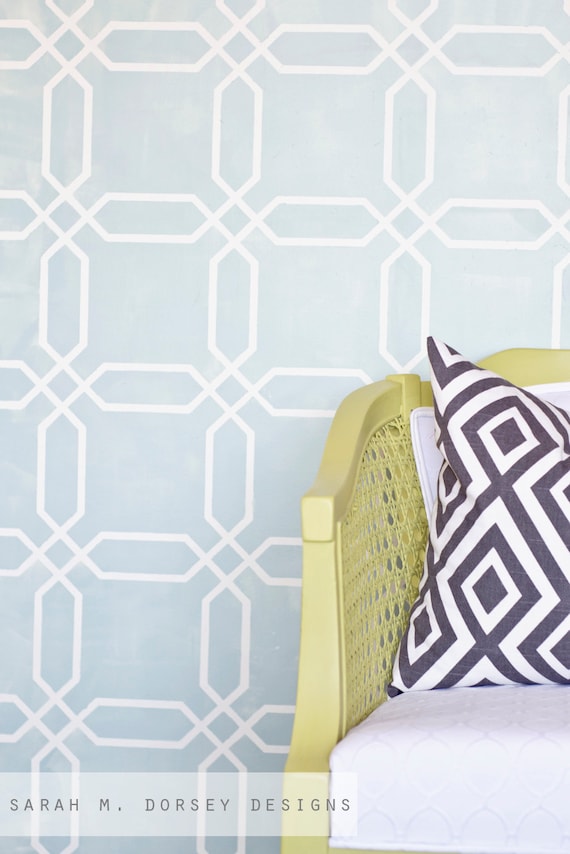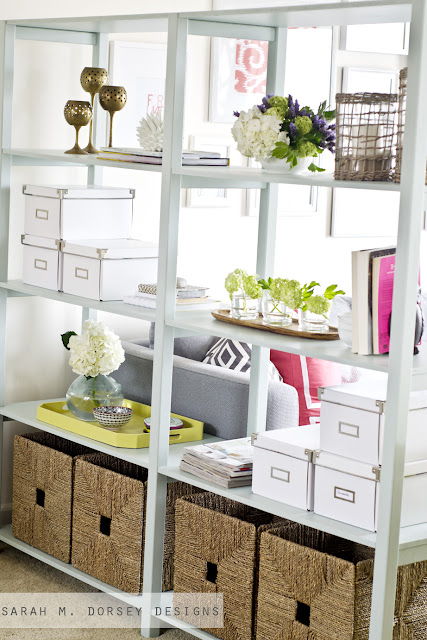Over the long weekend, we finally had time to finish our new coffee table. This has been one of our most time consuming projects, so it feels great to be done!
I'll give a full tutorial for how we got this look, but if you'd like to make something similar without milling your own wood, I'd recommend looking for thin strips of wood with the width already cut. This would definitely cut down the time significantly!
We started this project with a large pile of driftwood that we collected on a local beach (That's David on the left).
Once we decided on a pattern (with a little help for you all!), we calculated the number of pieces we would need and started cutting. We needed around 300 4"x1"x.25" pieces to make the top surface. WOW, that's a lot! At this point we were re-thinking the project, but we had already started cutting and loved how it looked inside, so we decided to keep going.
Our table measures:
36.5" L x 28.5" W x 15.5" H
Here's the time consuming part, milling our own wood ...
First David cut the driftwood into ~5" sections. To prepare the wood for the table saw, he cut larger pieces in half and cut one side so the board could sit flush on the table saw fence. For smaller pieces, he just trimmed off a round edge, laid it flat on the saw and cut another round edge to create the square side for the table saw.
Next, David setup the table saw for the .25" thickness and ripped all of the 5" sections into the strips. Whenever getting near the blade like this, always use a push stick to keep your hands clear! Now we had strips of wood that were about ~5" and smooth on three sides.
 |
| ~300 pieces ready for the final cuts |
Next, we setup the saw to cut all of the little pieces down to 1" wide. While David ripped the pieces to the 1" width, I cut the the edges with the chop saw to bring them down to the 4" length. We measured and secured a 2x2 piece of wood at 4" so we didn't have to measure every time.
Whew, that was a lot of cutting but I was so happy with the variety in all of the pieces, it was definitely motivation to keep cutting!
For the tabletop, we used 5/8" MDF from Ace (we purchased a half sheet). We also got them to cut it to size since it was free. We measured and drew the pattern for the center row. Setting up the first row so it was straight is important because that will determine how straight the rest of the pattern is. I had a 4x4 square that worked perfectly to make sure that it was straight. We then used wood glue to attach them to the MDF.
For the edges we decided to custom cut the edge pieces so that it would be as straight as possible. I held in place and marked the cut with a pencil while David cut with the chop saw. I did a little by myself when David wasn't home which worked fine, but it is definitely easier with two people.
After gluing in place, we moved onto the frame.
David ripped a 1.5" piece of poplar hobby board down to 1". We cut the corners at a 45 with the miter saw to frame it like a picture frame, attached it with wood glue and then used clamps to hold it in place while it dried.
We then lightly sanded the top with 220 grit sandpaper to remove any splinters or sharp edges.
Next, the base ...
We wanted something simple and thin to complement but not take away from the top, and thought metal would be perfect!
We picked up a few 1" angle steel pieces from Home Depot. It had a coating that was flaking off (we now think it is a galvanized coating), so we figured it wouldn't be hard to remove ... Well sanding didn't take care of it. Chemical strippers didn't do anything either ... really?? I then remembered that white vinegar can do some amazing things. After doing a little research, it seemed that it might be perfect! We built a little container to let them soak (online said about 24 hours). We waited about 16 hours and most of it wiped off with a paper towel. We also used a scotch brite pad to sand off the tougher spots but I think it would of all come off with the paper towel if we let it sit longer.
We rinsed off with water and dried throughly with a paper towel quickly to avoid rusting. We then sealed the separate pieces with polyurethane, but you could also spray once the frame is put together.
To build the frame we measured and cut (with a metal jigsaw blade, like this
one) the steel to size (14.5" long angle steel x4, 3' straight steel x2, 27.5" straight steel x2). You have to cut slowly and take breaks otherwise your blade will overheat and break (luckily we had three :)
Then we drilled holes through the steel. We used a small drill bit first and then a larger one so that the hole was big enough to fit a bolt. With metal, it is best to drill slowly and press firmly (although we did break several bits ...)
We also soaked a few bolts in the vinegar (and sealed with poly) so that they would match the steel frame. We then used angle brackets to attach the legs to the top.
After a little trial and error with removing the coating and breaking some jigsaw blades and drill bits, we had a frame!
We sealed the metal with a few coats of spray satin polyurethane and the wood with 3 coats of matte polyurethane.
And then we were done, finally! :) This was definitely one of our most time consuming projects, but I am in LOVE with the custom look!
I love how open it is on the bottom! Annabelle does too, since there is plenty of room to lay underneath.
Peonies are my absolute favorite flower (this actually looks a lot like my wedding bouquet). The little hydrangea came from my plant which just started to bloom again, love the color!
A few close-ups.
Annabelle in her usual sleeping spot :)
Maybe a lucite tray so I don't have to cover up any of our hard work?
Total Time (too much to count, but here's an estimate :)
Cut down driftwood ~ 8 hours (broken up with several breaks, fatigue around saws = not good!)
Lay out pattern and secure strips of wood ~ 4 hours
Finish edge of tabletop (mark where strips meet edge and cut, add poplar frame edge) ~3 hours
Cut and assemble steel frame ~2 hours
Apply polyurethane ~1 hour (plus drying time)
To significantly reduce time, buy pre-cut wood such as thin poplar/oak hobby board (I wouldn't recommend paint sticks since they shrink and curl as they age)
Also, I didn't mention it throughout, but always use your safety glasses, hearing protection, respirator and gloves where needed (which is a lot with this project!)
Total Cost:
Half sheet 5/8" MDF: $7 (Ace)
1" Angle steel 6' long - $12.00 (Home Depot)
1" straight steel 6' long- $8.00 x2 (Home Depot)
Polyurethane: $11 (spray already owned) (Home Depot)
Total: $46
Definitely a time consuming project, but I love the end result!



































.JPG)


.JPG)




















